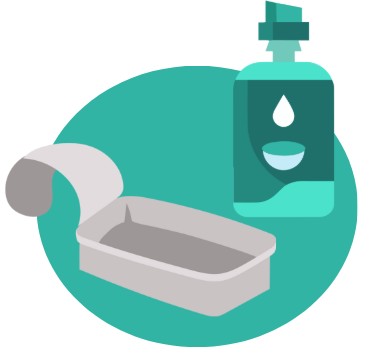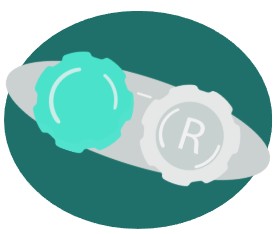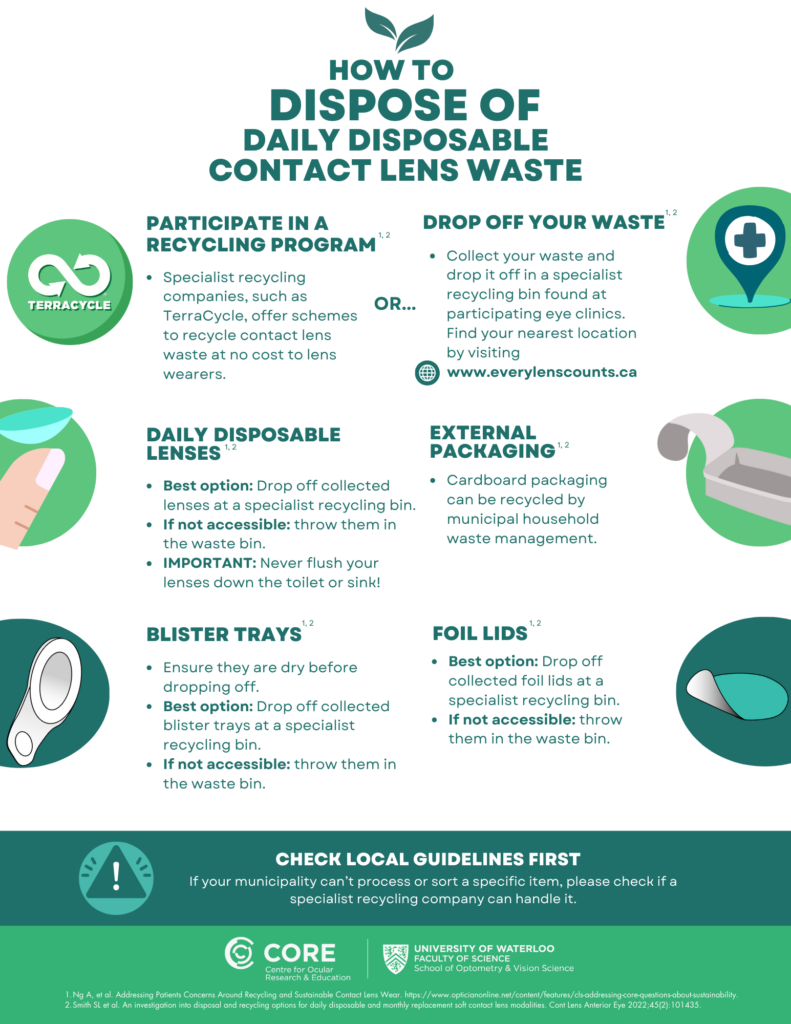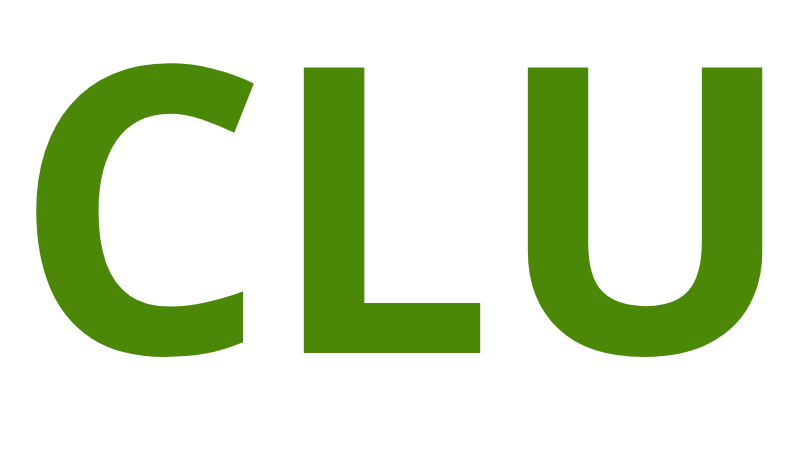
How to sort & dispose of your contact lens waste
One year’s worth of contact lens wear creates about 1 kg of waste,1,2 but did you know that most of this can be recycled?
Municipal recycling can take care of the cardboard boxes that keep the lenses together. But smaller items, such as the plastic blister tray, the shiny foils, and even the contact lenses themselves, cannot be recycled by regular municipal recycling streams.2
What should I do with my contact lens waste?
Even though regular household recycling can’t handle contact lens waste, several specialist recycling companies can!
One example is TerraCycle, which have partnered with Bausch + Lomb in Canada and USA to offer a free recycling service of all brands of contact lenses and blister packs. All you simply have to do is collect your used contact lenses, plastic trays, and shiny foils in a bag, and drop them off at a collection point (usually offered by your eye care provider). You can find where collection bins are located on the TerraCycle website. If you are a lens wearer in the UK, you have the option to send your contact lens waste to Vision Direct using a FREE Royal Mail label.


Some optical companies may use other recycling companies. For example, Specsavers UK and Boots use MyGroup to facilitate the recycling of their customer’s contact lens waste, while down in Australia, Opticycle is a leader in contact lens recycling of plastic blisters and foils.
Just make sure your recyclable items are dry, and only contain the accepted items before putting them into the collection bin. Please note that unopened blister packs are not accepted through this program and should not be included in your drop-off.
I wear reusable contact lenses: can I recycle my solutions and case?
Again, the exterior cardboard packaging for your bottle of solution can go into your regular household recycling. Empty bottles of solution can also go into your household recycling, however, any small pieces associated with the bottle (such as any the bottle caps, stoppers, or tamper evident rings) can usually only be discarded in a regular waste bin.


Contact lens cases need to be replaced on a regular basis. Currently, these can only be recycled by a small number of providers, so if your eye care provider doesn’t have a box that can accept them, you should throw them in a regular waste bin. However, if you live in the USA, Bausch + Lomb have launched Biotrue Eye Care Recycling.
Under this initiative, the “difficult-to-recycle” pieces such as the solution bottle cap, contact lens case, and even eyedrop bottles (including single-dose vials) can be recycled, free of charge and all brands are accepted. Simply set up your free TerraCycle account, collect the acceptable waste under the scheme, print off a free shipping label when you’re ready to send your items and ship it off to the address provided.

Another option for recycling these “difficult-to-recycle” pieces includes purchasing a Zero Waste Box from TerraCycle, where a range of non-hazardous flexible or rigid plastic products can be recycled by them. When the box is full of collected materials, you ship the box off to TerraCycle who will take care of the sorting and recycling.
Summary

Whether you’re new to contact lenses, or you’ve been wearing them for decades, you’ll now know how to sort the waste from wearing your contact lenses. These services are fairly new and evolving, so why not ask your eye care provider if they have a bin that accepts your contact lens waste the next time you’re passing by their office.
Download this infographic (CAN / UK / US) to learn more and share with your friends and family on your social media platforms, tagging @COREEyeNews and #CLSustainability #SustainableEyecare.
See our other pages to learn how much (or little) waste is generated from wearing contact lenses and why you should responsibly dispose of your contact lens waste.
References & Resources
1. Routhier J, Freitas MD, Hickson-Curran S. Daily disposable versus reusable contact lenses: a close match when it comes to the impact on the environment. Cont Lens Anterior Eye 2012;35:e2.
2. Smith SL, Orsborn GN, Sulley A, et al. An investigation into disposal and recycling options for daily disposable and monthly replacement soft contact lens modalities. Cont Lens Anterior Eye 2022;45(2):101435.




